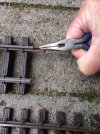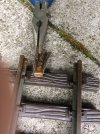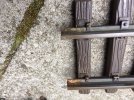Greg Elmassian
Guest
Yes, there are many such compounds, most are called "Anti-sieze" here, and have copper, nickel, or sometimes aluminum in them.
I actually prefer the nickel to copper, but that is just splitting hairs. I have been using anti-sieze on things like this since 1969.
Goes great on the end of a Mini Cooper crankshaft, for any of those who have replaced a clutch on the same.
Greg
I actually prefer the nickel to copper, but that is just splitting hairs. I have been using anti-sieze on things like this since 1969.
Goes great on the end of a Mini Cooper crankshaft, for any of those who have replaced a clutch on the same.
Greg













